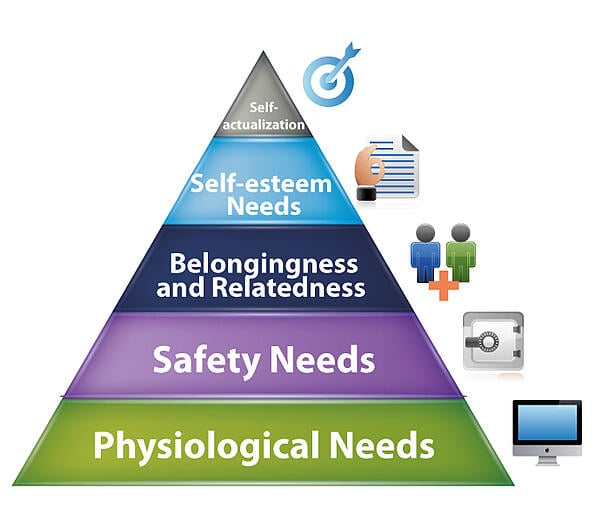The psychologist Abraham Maslow was best known for his theory of the hierarchy of needs. Entrepreneurs, managers, marketers and psychologists have all benefited from Maslow’s theory. But eLearning professionals too can benefit from his pyramid-style guide to human behavior.
Learners are more likely to feel motivated and engaged in a course when they consider the content is able to meet their personal and professional needs. Therefore, eLearning course developers need to craft their courses based on this hierarchy of need to help learners achieve their maximum potential.
Here are five learners’ needs every course developers should meet:
Physiological Needs
These are the very first and most basic needs required so that students can successfully complete the course. Appropriate job-aids, content and materials, compatible software, reliable and high-bandwidth Internet connection are just some examples.
Without these resources, it would be impossible for learners to make any headway with their lessons. These may seem obvious but you’ll be surprised that many eLearning courses still use buggy or incompatible software and obsolete materials.
Meet the basic needs of your learners first. Rest assured that good things will happen next.
Safety Needs
Do learners feel safe in the classroom? They should be. If you want them to learn, you should be able to provide a rich learning environment that encourages participation, confidence, curiosity and openness.
Without safety, students will constantly feel uncertain, anxious and even stressed. Think of a new student walking into the classroom for the first time. He or she will usually feel unsafe. Everything looks unfamiliar and uncertain. You have to offer the student some sense of belongingness and familiarity and give him or her enough time to adjust.
Likewise, in your digital classroom, preparing students is key to reducing uncertainty and anxiety. Make sure they understand what is expected of them. Have clear requirements, or a pre-course preparation if necessary. Implement a consistent formatting and design for familiarity. You can save the first week or the week before the start date for introducing students to the course, what they need to pass and what rules to follow.
Belongingness and Relatedness
Belongingness and safety works hand-in-hand. If a student doesn’t feel like he or she belongs, or relates to, other learners, he or she will have a hard time focusing on the lessons. And if a student don’t have a meaningful connection with the instructor, collaboration and completion is impossible.
Naturally, people have a need to feel connected or related to others. In eLearning it's no different. Studies show that learners who feel they 'belong' have higher levels of intrinsic motivation and academic confidence.
Create a sense of relatedness so that students can effectively learn from and with each other. Promote dialogue and collaborative or small group activities. Encourage student participation. Your presence as an instructor is also important. Inspire them to reach their full potentials through personalized, timely and constructive feedback.
Self-esteem Needs
The capacity to feel respected and appreciated is a powerful source of motivation. Learners with a healthy sense of self or self-esteem, for instance, are curious and confident. Theirs is a “can do” attitude that makes learning possible.
As a course instructor or designer, you can help meet a student’s self-esteem needs by:
- Clarifying goals and offering real-life examples
- Giving students opportunity to constantly self-assess their progress and understanding of a subject
- Offering constructive and descriptive feedback to boost their efforts and encourage them in completing a task
- Providing a concrete proof of appreciation such as a certificate
The Need of Self-actualization
Maslow is a humanist who believes that humans strive to reach their fullest potential. When learning, humans aim for information that allows them to meet their individual goals and interests. This is why you should aim for relevant and meaningful content, and let students learn on their own pace using materials and tools they prefer.
A truly humanistic eLearning course respects the learner as a self-motivated and smart individual. It recognizes the learner’s inner drive to acquire valuable skills and knowledge in order and become better.
As eLearning developers we need to understand the different levels of human needs in order to develop effective eLearning courses, where students feel safe, motivated and engaged.









